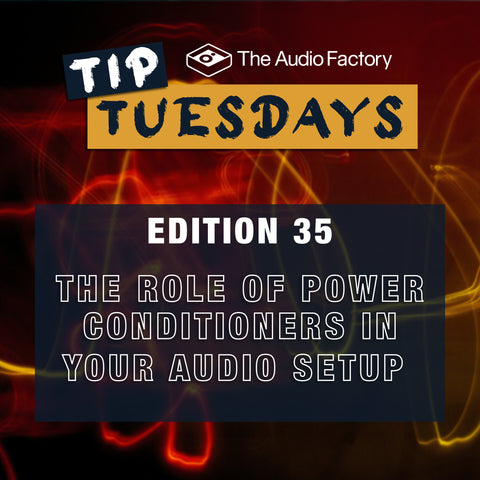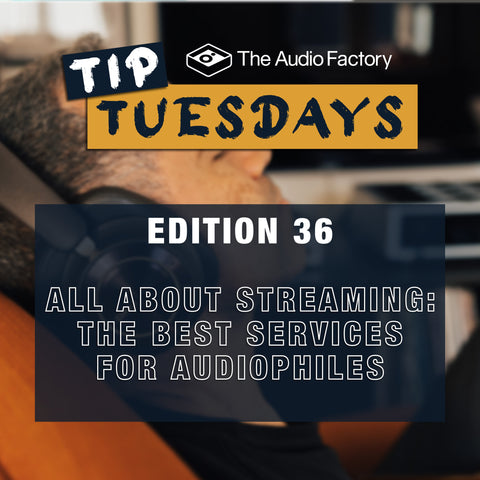Welcome to this week’s Tip Tuesday! Today, we’re exploring a crucial yet often overlooked component of audio setups: power conditioners. Whether you’re a seasoned audiophile or just beginning your journey into premium audio, understanding the role of power conditioners can help you get the most out of your equipment. Let’s dive into what power conditioners are, why they matter, and how they can enhance your audio experience.
What Is a Power Conditioner?
At its core, a power conditioner is a device that sits between your audio equipment and the power outlet, filtering and regulating the electricity that reaches your components. It’s designed to protect your gear from voltage fluctuations, power surges, and electrical noise.
All of these are common issues that can degrade sound quality and even damage sensitive audio equipment. Power conditioners typically offer surge protection, noise filtering, and sometimes voltage regulation, ensuring your system receives clean and stable power.

Why Clean Power Matters
You might wonder why clean power is so important for your audio setup. The answer lies in the fact that inconsistent or "dirty" power can introduce unwanted noise and distortion into your system. This noise can manifest as a hum, hiss, or other forms of interference that degrade the clarity and fidelity of your sound.
Also, voltage spikes and surges can cause long-term damage to your components, leading to costly repairs or replacements. A power conditioner helps mitigate these risks by providing a stable power supply, ensuring that your audio equipment operates at its best.
When and Where to Use a Power Conditioner
Not all audio setups necessarily require a power conditioner, but it’s a wise investment for those who are serious about preserving the quality of their sound system. If you live in an area prone to frequent power surges or if you notice noise interference in your audio, a power conditioner can be particularly beneficial.
It’s especially useful in home theater systems or complex Hi-Fi setups with multiple components, where the risk of power-related issues is higher. However, even a basic two-channel system can benefit from the protection and performance improvements offered by a power conditioner.

Which Devices Should Be Connected?
Ideally, all of your audio components should be connected to a power conditioner, but prioritizing certain devices can still provide significant benefits. Amplifiers, preamps, DACs, and high-end CD players are particularly sensitive to power quality and can greatly benefit from the clean power provided by a conditioner.
These components are responsible for processing and amplifying your audio signal, so ensuring they receive stable power is crucial for maintaining sound quality. Even less critical devices like turntables and streaming devices can see improvements when connected to a power conditioner.
Making the Investment
Investing in a power conditioner can seem like an extra expense, especially if you’ve already spent a considerable amount on your audio system. However, it’s an investment in the longevity and performance of your equipment. By protecting your gear from power-related damage and enhancing sound quality through clean power delivery, a power conditioner can help you get the most out of your audio setup for years to come.
As we wrap up this edition of Tip Tuesday, remember that the quality of your audio system isn’t just about the speakers, amplifiers, or source components—it’s also about the power that drives them. Incorporating a power conditioner into your setup can be a game-changer, elevating your listening experience to new heights. Thank you for checking out this edition and until next time, happy listening!





Comments (0)
There are no comments for this article. Be the first one to leave a message!